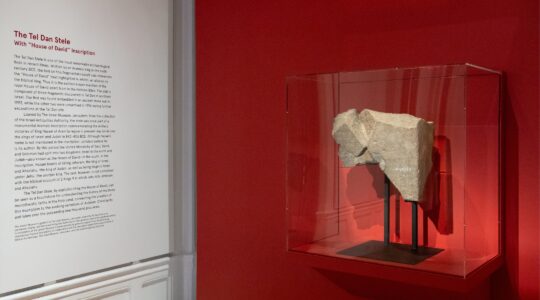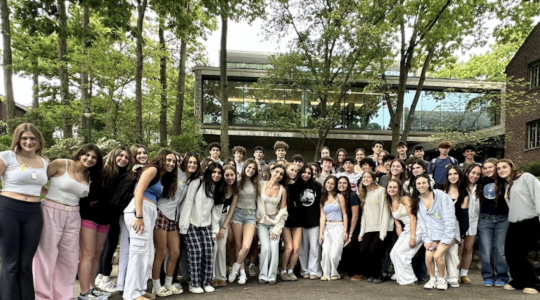I remember being confused when I started hearing about Belize. Everyone was going there, and the name sounded sort of familiar, but where was it? Why couldn’t I place it?
It turned out I wasn’t crazy. Belize didn’t exist when I was born; back then it was British Honduras, and I guess my schoolbooks were out of date, because the Central American country actually gained full independence in 1981, well before my seventh-grade geography class.
The tiny, multiethnic nation — slightly bigger than Israel, if a good deal less populous — is making up for lost time when it comes to name recognition. If you haven’t yet been to Belize, you surely know people who have. In addition to the gorgeous, unspoiled beaches and warm turquoise waters you’d expect of a tropical coastline, Belize offers a (mostly) English-speaking oasis in a region dominated by the Spanish language, as well as the continent’s finest barrier reef and some of its most impressive Mayan ruins.
About that reef: Belize, wedged between Mexico and Guatemala on the Caribbean Sea, is a paradise for nature lovers. If your idea of a tropical getaway involves chic shopping and a vibrant arts scene, Belize is not for you.
And while Belize is very popular with Jewish vacationers, the only evidence of Jewish community is a tiny Sephardic cemetery; Miami Beach, this is not.
If, however, your idea of fun involves ogling exotic parrots and monkeys, hiking around rainforests and exploring ancient caves, or snorkeling a crystalline undersea world, Belize may be your ticket this winter. Given the short distance, adventurous travelers frequently tack on an excursion to Guatemala for cultural contrast (or for Shabbat dinner; Guatemala is your nearest Chabad House).
This is not to say that Belize is without culture. The country is a jumble of distinct, intermingled ethnic minorities, including a number of Mayans, many of whom still speak indigenous languages — and whose ancestors built the Mayan pyramids that today are the most popular cultural attraction. Few would consider a Belize trip complete without a visit to one of the green, jungly Mayan settlements.
There is one pyramid fewer these days: Unbelievably, a road crew bulldozed one of the largest monuments in 2013, seeing a pile of free gravel where others saw a 2,000-year-old world heritage site. But more than a half-dozen Mesoamerican pyramids remain — and even with a growing number of cruise-ship passengers coming to see them, they still lack the crowds of their Mexican counterparts.
Whether or not you’re a swimmer, a boater, a diver or a water-sports enthusiast, water will be a central feature of your Belize vacation. The coastline is dotted with tiny islands, coral atolls and “cayes” (pronunciation is closer to “keys”); many are home to exclusive resorts where guests relax, surrounded by the sea.
Some resorts, like those at Thatch Caye and St. George’s Caye, even boast the kind of overwater bungalows rare in the Caribbean — they’re a feature more often associated with the South Pacific — where guests can peer through translucent floors to the marine life below. Indeed, luxury resorts, many with an ecotourism focus, have sprouted around Belize over the past decade; the area’s topography, with its reefs and atolls, lends itself to intimate, secluded hideaways.
From New York, you will probably change planes en route to Belize City, the largest city and international hub. Once there, you’ll be unlikely to linger. Belize City has that seedy drabness unique to the urban Caribbean, a weird visual clash between tropical sunshine and run-down infrastructure. But the city makes a good jumping-off point for two of the best Mayan ruins — Altun Ha and Lamanai — both within a few hours’ drive.
Many travelers make a beeline north for Ambergris Caye, the largest of Belize’s islands and a place where it feels like everyone is on vacation. Travelers can catch a small plane or a fast ferry from Belize City to San Pedro, a pretty beach town full of brightly colored buildings, and indulge in all kinds of water sports.
Support the New York Jewish Week
Our nonprofit newsroom depends on readers like you. Make a donation now to support independent Jewish journalism in New York.
The other popular strategy is to head south. Placencia, a small, idyllic town on a southern peninsula, has quietly developed into the laid-back alternative to lively San Pedro. Surrounded by gentle waters and mangrove swamps, Placencia boasts 16 miles of sandy beaches with a seafront promenade, plenty of cafés serving fresh fish, a sprinkling of art galleries, and a local industry that caters to snorkelers.
It’s all so relaxing that many vacationers never go home. Among those birdwatchers and sunbathers are plenty of retirees, drawn by the combination of sun, tax perks, English-speaking convenience and an existing community of North American expats. Belize may not yet be Miami — but for a growing number of cold-weather refugees, it’s paradise enough.
The New York Jewish Week brings you the stories behind the headlines, keeping you connected to Jewish life in New York. Help sustain the reporting you trust by donating today.




